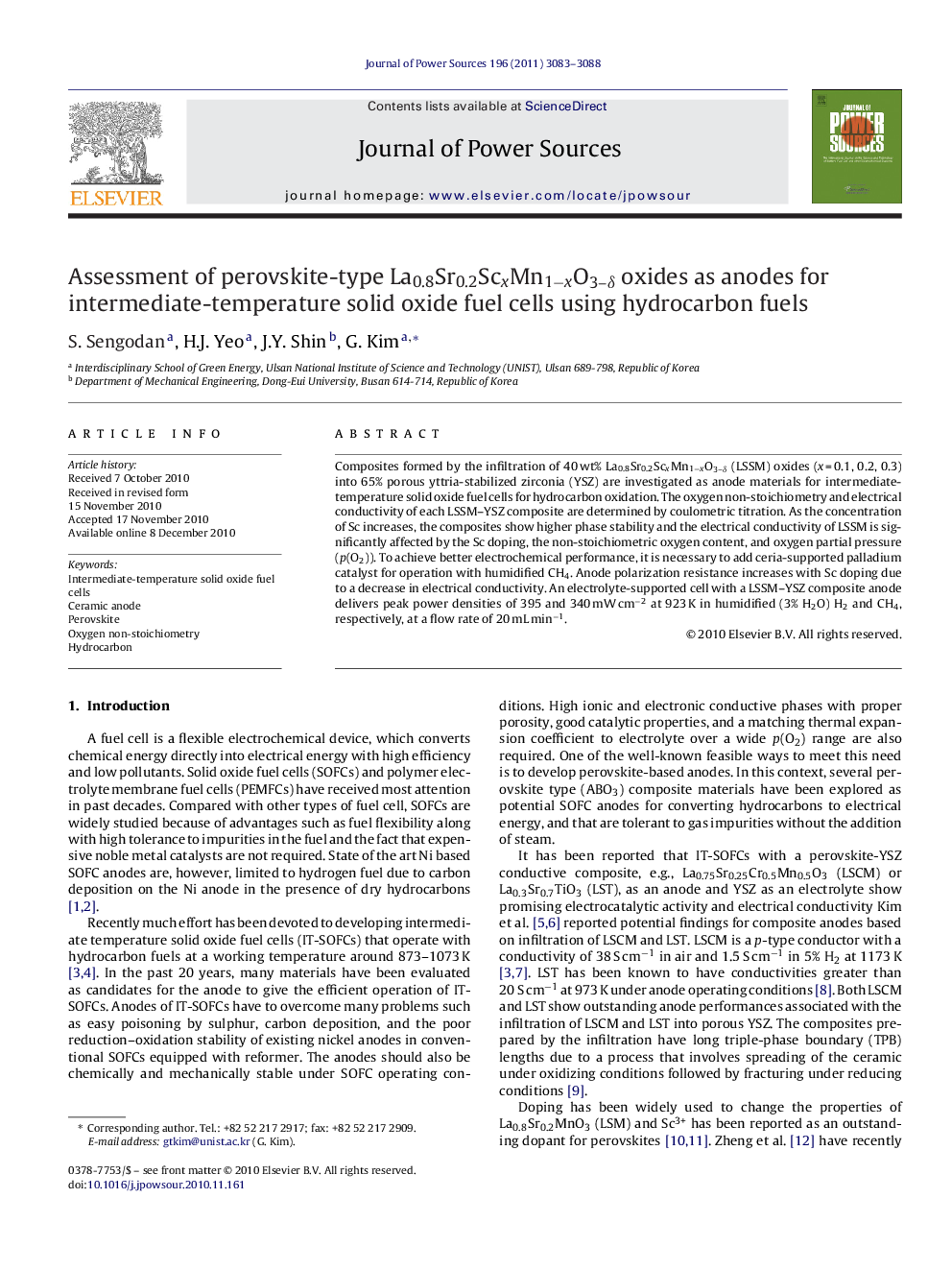| Article ID | Journal | Published Year | Pages | File Type |
|---|---|---|---|---|
| 10567620 | Journal of Power Sources | 2011 | 6 Pages |
Abstract
Composites formed by the infiltration of 40 wt% La0.8Sr0.2ScxMn1âxO3-δ (LSSM) oxides (x = 0.1, 0.2, 0.3) into 65% porous yttria-stabilized zirconia (YSZ) are investigated as anode materials for intermediate-temperature solid oxide fuel cells for hydrocarbon oxidation. The oxygen non-stoichiometry and electrical conductivity of each LSSM-YSZ composite are determined by coulometric titration. As the concentration of Sc increases, the composites show higher phase stability and the electrical conductivity of LSSM is significantly affected by the Sc doping, the non-stoichiometric oxygen content, and oxygen partial pressure (p(O2)). To achieve better electrochemical performance, it is necessary to add ceria-supported palladium catalyst for operation with humidified CH4. Anode polarization resistance increases with Sc doping due to a decrease in electrical conductivity. An electrolyte-supported cell with a LSSM-YSZ composite anode delivers peak power densities of 395 and 340 mW cmâ2 at 923 K in humidified (3% H2O) H2 and CH4, respectively, at a flow rate of 20 mL minâ1.
Keywords
Related Topics
Physical Sciences and Engineering
Chemistry
Electrochemistry
Authors
S. Sengodan, H.J. Yeo, J.Y. Shin, G. Kim,
